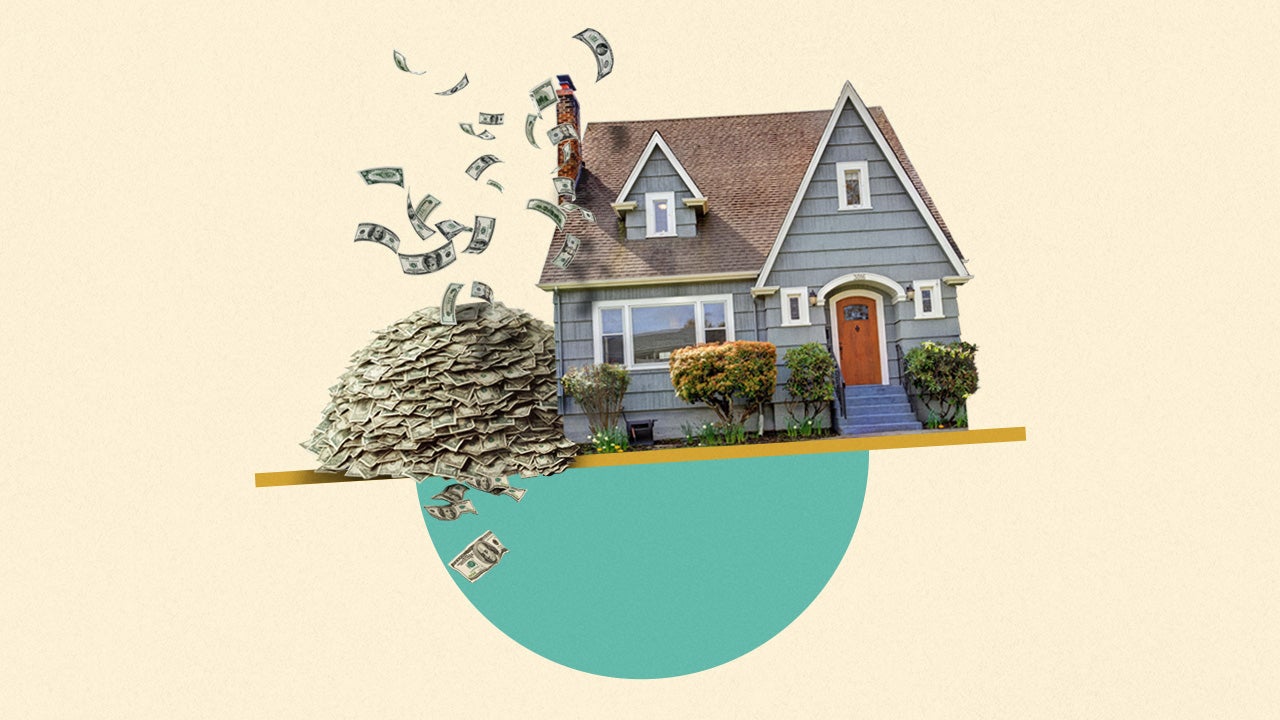How are mortgage rates determined?

Mortgage rates have been on a wild ride in recent years, plunging to record lows during the pandemic, then ramping back up to a steady 7 percent so far in 2025. While the Federal Reserve more often makes headlines, there are actually many factors that influence the cost of mortgages. Here’s why rates keep changing.
How are mortgage interest rates determined?
When it comes to the overall mortgage rate picture and how often rates shift, there are bigger forces at play beyond just your lender.
In fact, mortgage rates “are not directly set by any one entity, but rather arise from the interplay of complex economic factors,” says Andrew Latham, a certified financial planner based in Rolesville, North Carolina. “Lenders typically set their rates based on the return they need to make a profit after accounting for risks and costs.”
One of those factors: 10-year Treasury notes, also known as T-notes. These are securities issued by the U.S. government and considered low- to no-risk since they have the backing of the government. Investors buy them at a yield to maturity, or yield. This yield helps indicate how confident investors feel about the economy. Whenever there’s uncertainty, more investors turn their attention to safer vehicles like Treasurys, which drives yields down. That up-or-down movement is often tied to the interest rates on some financial products, including 30-year fixed-rate mortgages.
Then there are mortgage-backed securities (MBS), another option for investors. These are bundles of thousands of mortgages, created when banks and other lenders sell the loans they make to Fannie Mae, Freddie Mac and Ginnie Mae. This process takes place within what’s known as the secondary mortgage market.
“It may seem counterintuitive that 30-year mortgage rates are priced relative to yields on 10-year Treasurys,” says Greg McBride, CFA, chief financial analyst for Bankrate, “but when these 30-year mortgages are packaged together into bonds, on average, they tend to pay out over a 10-year period as homeowners refinance, move or otherwise pay off their loans early.”
Both factors — the 10-year Treasury and MBS — help lenders determine how to price their loans.
“Mortgage lenders usually add a margin to the MBS rate to come up with the rate they charge for a mortgage loan,” says Preetam Purohit, head of Hedging and Analytics for Embrace Home Loans. based in Newport, Rhode Island.
The big banks use a slightly different method to set rates, Purohit says, because they keep some mortgages on their books rather than selling them.
The takeaway, though, is the same: Mortgage rates aren’t set in a vacuum.
Other market factors impacting mortgage interest rates
Inflation
Inflation also matters. Investors tend to demand higher bond yields in times of higher or rapid inflation because the returns they receive have less purchasing power. This impacts the yields on Treasurys, MBS and ultimately the rates quoted to mortgage borrowers.
Federal Reserve
The Federal Reserve doesn’t set mortgage rates, but its monetary policy decisions have some influence. When the Fed raised its key benchmark rate in 2022 and 2023, mortgage rates rose, too.
It doesn’t always play out that way. The central bank began cutting rates in 2024, but mortgage rates have moved in the opposite direction, starting off 2025 higher, in the 7 percent range.
Government policies
If the U.S. government implements policies that promote homeownership, such as a tax credit, that can stimulate demand for mortgages and possibly lead to higher rates.
Geopolitical happenings
Events abroad — like war or a major election — often impact markets in the U.S.
“A financial crisis in another country, for example, could send investors flocking to U.S. bonds as a safe haven, driving down their yields and, in turn, mortgage rates,” says Dennis Shirshikov, head of Growth at vacation home platform Summer.com.
Personal factors impacting mortgage interest rates
The factors we’ve outlined so far are reflected in the mortgage rates you see advertised and reported in rate surveys. Your specific rate, though, depends on your credit and financial circumstances. This includes:
- Credit score: A higher credit score indicates there’s a better likelihood you’ll repay the mortgage, which translates to less risk for the lender and a lower rate for you. You can get a conventional loan with a score as low as 620, but you’ll be eligible for the best rate if your score is 780 or above.
- Down payment and loan-to-value (LTV) ratio: Generally, the lower your LTV ratio, the lower your rate. The LTV ratio compares the amount you’re borrowing with the price of the home. If you’re making a 3 percent down payment, for example, you’d then be borrowing 97 percent of the home’s price, so your LTV ratio is 97 percent.
- Debt-to-income (DTI) ratio: Similar to LTV ratio, if your DTI ratio is lower, you’ll likely get a lower rate. The DTI ratio compares your monthly debt payments — including the mortgage — with your monthly income to ensure you’re not overextended. You can still get a conventional loan with a higher DTI ratio, but for the best rates, lenders look for no higher than 36 percent.
- Occupancy and property type: “Occupancy status, such as if this will be your primary home, secondary home or investment property, can also significantly impact the rate,” Purohit says. “If the home will be your primary residence, the rate may be lower. The type of property will also impact the rate. Any property type other than a single-family home — such as a condo, manufactured home, or multi-unit dwelling — will generally increase the mortgage rate.”
- No-closing-cost option: Some borrowers opt to finance the closing costs with the mortgage instead of paying them out of pocket upfront. In this case, the lender might charge a slightly higher rate.
- Points: A mortgage point or discount point is an optional fee a borrower can pay to lower their rate.
How much do mortgage interest rates vary across lenders?
Mortgage rates can vary substantially from lender to lender. This is due to differences in their pricing strategies, cost structures, margins and risk appetites.
“In setting prices, lenders have to look at the cost of origination and decide what margins they want above those costs,” says Jerry Selitto, president of mortgage lender Better. “The more efficient a manufacturer of mortgages can be, the more competitive they are on pricing.”
Competition in the local market can make a difference, too.
“An area with higher competition between lenders leads to compressed margins and lower mortgage rates,” Purohit says.
Why do different mortgage types have different interest rates?
“This is due to variations in term length, risk and market demand,” Latham says. “For instance, fixed-rate mortgages often charge a higher interest rate than adjustable-rate mortgages during the ARM’s fixed-rate period because lenders of fixed-rate loans bear the risk of interest rate changes during the loan’s term.”
Likewise, government-backed FHA, VA and USDA loans sometimes have lower rates because they have a government guarantee or insurance that cuts the lender’s risk.
FAQ
You may also like









